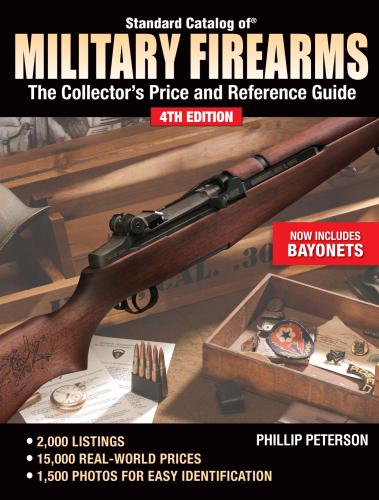Courtesy Geschichte und Technik der
europaischen Militarrevolver, Journal-Verlag
Schwend GmbH with permission
Model 1878/86 Officer’s Revolver (Fluted Cylinder)
This 6-shot revolver was issued to officers in the Belgian army. Chambered for the 9mm cartridge and fitted with a 5.5" octagon barrel. Checkered wooden grips with lanyard loop. Produced from 1886 to 1940.
Courtesy Geschichte und Technik der
europaischen Militarrevolver, Journal-Verlag
Schwend GmbH with permission
Model 1883/86 Revolver
Similar to the Model 1878/86 Officer’s but issued to NCOs as a regular sidearm. Cylinder is non-fluted. The hammer rebounds slightly after the revolver has been fired.
Courtesy Geschichte und Technik der
europaischen Militarrevolver, Journal-Verlag
Schwend GmbH with permission
GAVAGE, ARMAND
A 7.65mm caliber semi-automatic pistol with a fixed barrel and a concealed hammer. Similar in appearance to the Clement. Markings with “AG” molded into the grips. Some (1,500 est.) have been found bearing German Waffenamts. Manufactured from 1930s to 1940s. Add 25 percent for German marked pistols.
FABRIQUE NATIONALE
NOTE: For historical and technical information, see Blake Stevens, The Browning High Power Automatic Pistol, Collector Grade Publications, 1990.
Model 1903
A considerable improvement over the Model 1900. It is also a blowback-operated semi-automatic; but the recoil spring is located under the barrel, and the firing pin travels through the slide after being struck by a hidden hammer. The barrel is held in place by five locking lugs that fit into five grooves in the frame. This pistol is chambered for the 9mm Browning long cartridge and has a 5" barrel. The finish is blued with molded plastic grips, and the detachable magazine holds 7 rounds. There is a detachable shoulder stock/holster along with a 10-round magazine that was available for this model. These accessories are extremely rare and if present would make the package worth approximately five times that of the pistol alone. There were approximately 58,000 manufactured between 1903 and 1939. This model was one of the Browning patents that the Eibar Spanish gunmakers did so love to copy because of the simplicity of the design.
It should be noted that during WWI the Spanish supplied almost one million Model 1903 copies for the French army.
Production Note: FN had a number of contract sales to foreign countries from 1907 to about 1928. These countries are:
| Sweden: 1907-1908 | 10,000 |
| Russia: 1908-1910 | 8,200 |
| Ottoman Empire: 1908-1923 | 8,000 |
| England: 1914 | 100 |
| Holland: 1922 | 80 |
| Estonia: 1922-1928 | 4616 |
| El Salvador: 1927- | ? |
| Paraguay: 1927 | 324 |
Courtesy Richard M. Kumor Sr.
Model 1910 “New Model”
Chambered for 7.65mm and 9mm short. It has a 3.5" barrel, is blued, and has molded plastic grips. The principal difference between this model and its predecessors is that the recoil spring on the Model 1910 is wrapped around the barrel. This gives the slide a more graceful tubular appearance instead of the old slab-sided look. This model has the triple safety features of the 1906 Model 2nd variation and is blued with molded plastic grips. This model was adopted by police forces around the world. It was manufactured between 1912 and 1954.
Courtesy Orvel Reichert
Model 1922
Similar to the Model 1910, with a longer 4.5" barrel and correspondingly longer slide. This model was a military success, and approximately 200,000 were produced during the WWII German occupation of Belgium in 1940-1944. These pistols that bear the Waffenamt acceptance marks are known as the “Pistole Modell 626(b),” and are chambered for 7.65mm only. The Germans also had a 9mm version designated the “Pistole Modell 641(b).” These pistols would bring a 25 percent premium. There were approximately 360,000 of these pistols produced during the German occupation. There are a number of subvariations that may effect value. See listings under Netherlands and Yugoslavia for their M 1922 contract pistols. They were manufactured between 1912 and 1959.
Model 1922 • Paul Goodwin photo
Model 1935
The last design from John Browning and was developed between 1925 and 1935. This pistol is known as the Model 1935, the P-35, High-Power or HP, and also as the GP (which stood for “Grand Puissance”) and was referred to by all those names at one time or another. The HP is essentially an improved version of the Colt 1911 design. The swinging link was replaced with a fixed cam, which was less prone to wear. It is chambered for the 9mm Parabellum and has a 13-round detachable magazine. The only drawback to the design is that the trigger pull is not as fine as that of the 1911, as there is a transfer bar instead of a stirrup arrangement. This is necessary due to the increased magazine capacity resulting in a thicker grip. The barrel is 4.75" in length. It has an external hammer with a manual and a magazine safety, was available with various finishes and sight options, and was furnished with
